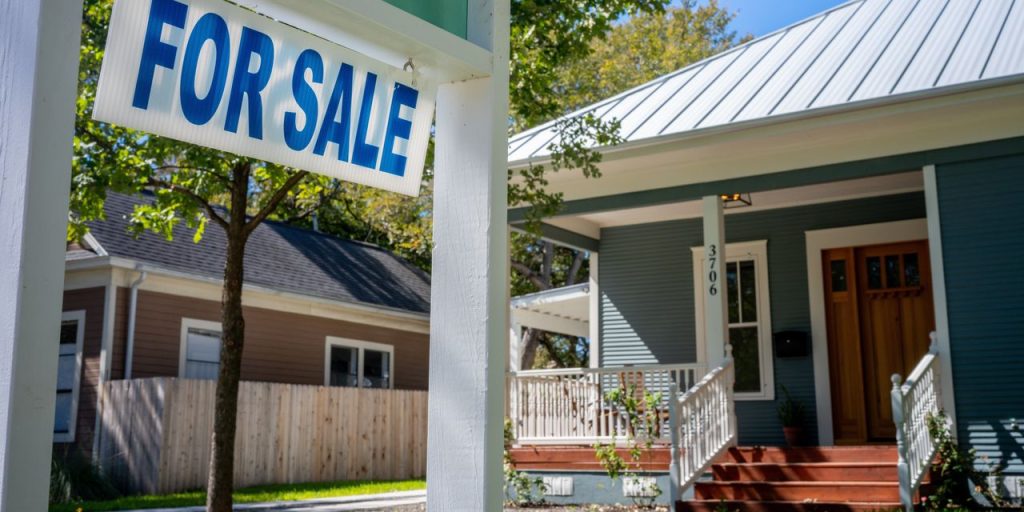It’s an unwelcome blast from the past — home buyers are facing the most unaffordable housing market since the 1980s, according to a new report.
With mortgage rates at 23-year highs, the monthly principal and interest payment on a median-priced home hit a record high in October. That puts the U.S. housing market at its least affordable since 1984, according to a report by Intercontinental Exchange, or ICE
ICE,
-0.11%.
The principal and interest payment, which excludes taxes, insurance, and homeowners association fees, surpassed $2,500 in October for the first time since 1975, when the company began tracking the data. Compared with the prior month, the payment went up by $144.
The typical monthly P&I payment is up 94% over the last two years, rising by $1,240. The rate on a 30-year fixed-rate mortgage was averaging 7.76% as of Nov. 2, according to Freddie Mac.
For the typical household, the principal and interest payment now amounts to roughly 41% of their income. That’s significant shift from the last 35 years, when the share of income households needed to cover their P&I payments was less than 25% on average, ICE added.
“Affordability pressure is not coming from interest rates alone, though,” Andy Walden, vice president of enterprise research at ICE, said in a statement.
He added, “The last time affordability was this bad in the 80s, rates were in the double digits and the average home was about 3.5 times median income, in stark contrast to today’s price-to-income ratio of nearly 6-to-1.”
“‘The last time affordability was this bad in the 80s, rates were in the double digits and the average home was about 3.5 times median income, in stark contrast to today’s price-to-income ratio of nearly 6-to-1.’”
Back in October 1984, the 30-year mortgage rate was averaging at 14%, according to Freddie Mac data. That was during a period of high rates that’s sometimes referred to the “Volcker era,” when Paul Volcker, chairman of the Federal Reserve between Aug. 6, 1979 and Aug. 11, 1987, helped to halt inflation in the 1980s by raising real interest rates, despite protests from his critics.
At the time, baby boomers had hit their prime home-buying years, purchasing homes with mortgage rates over 15%, and then opting to refinance in the years following as rates consistently fell until the Fed hit the brakes once again and raised rates in June 2022.
Walden noted that with rates over 7.5% and affordability hitting a 39-year low, “it’s fair to expect prices to weaken later in 2023.”
Returning the housing market to more affordable levels would require one of three things, ICE said: Either the 30-year mortgage rate needs to fall by 4.4 percentage points, the median household income needs to rise by 62%, or home prices need to fall by 38%.
But “none of which are likely to fully solve today’s challenges alone, and none of which tend to move independently of one another,” the report stated.
Home prices cooling in most markets
Although home prices grew in September, the latest month for which there is data, ICE said it expects a slowdown in the months ahead.
In September, home prices rose 4.3% compared with the year before. But prices are showing signs of slowing, as they showed the weakest monthly gain since January, at 0.39%. Home prices cooled in 49 of the 50 largest U.S. markets, ICE said, with Cleveland being the sole exception.
Prices fell the most in Austin and New Orleans, by 0.31% and 0.14% respectively.
The most affordable real-estate market was Cleveland, the company noted, where the monthly P&I payment was 25.5% of a household’s income. Oklahoma City and Pittsburgh followed in second and third place.
The least affordable market was Los Angeles, where the payment would eat up 76.5% of a household’s income. San Diego and San Jose followed in second and third place.
Read the full article here
